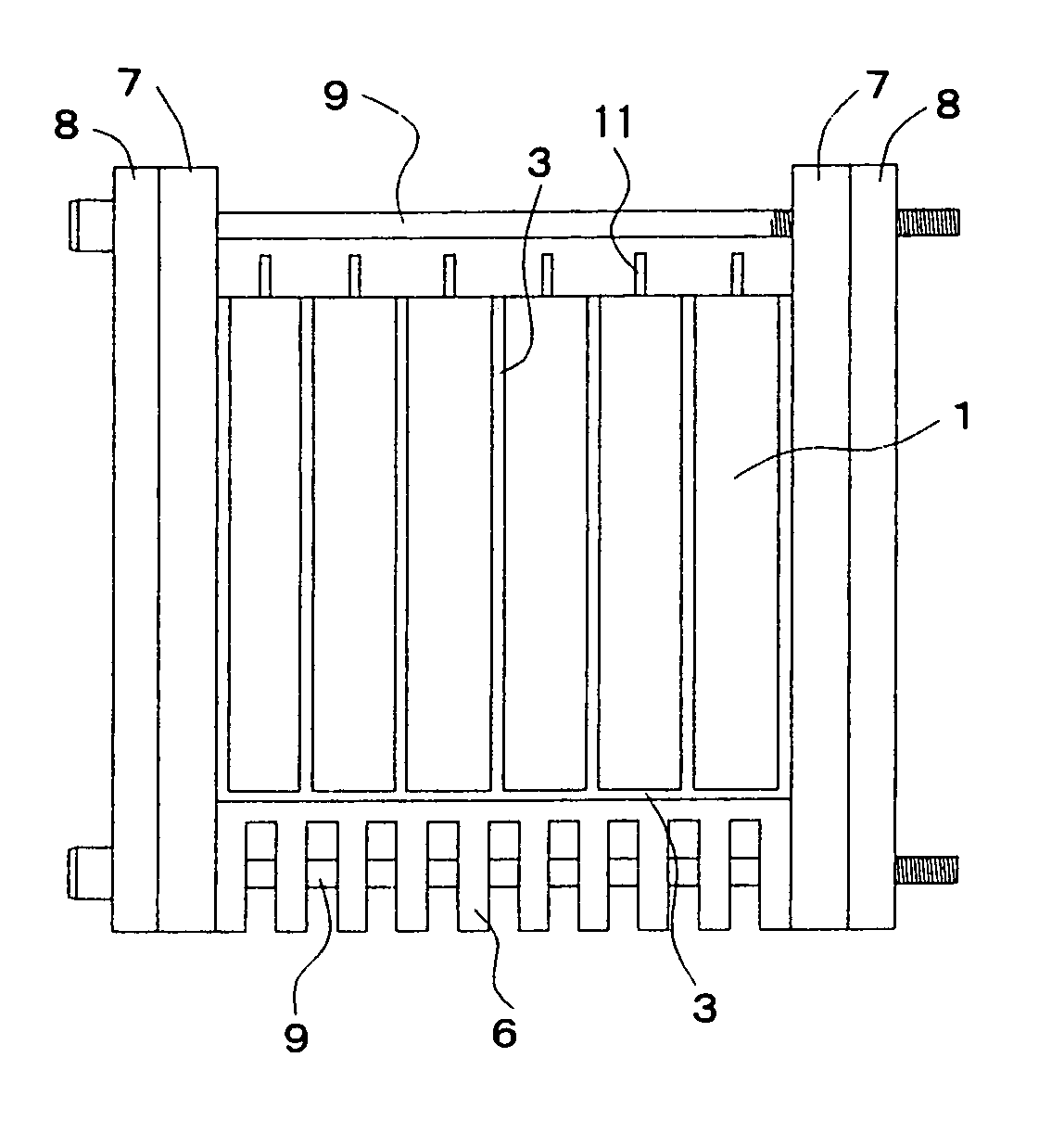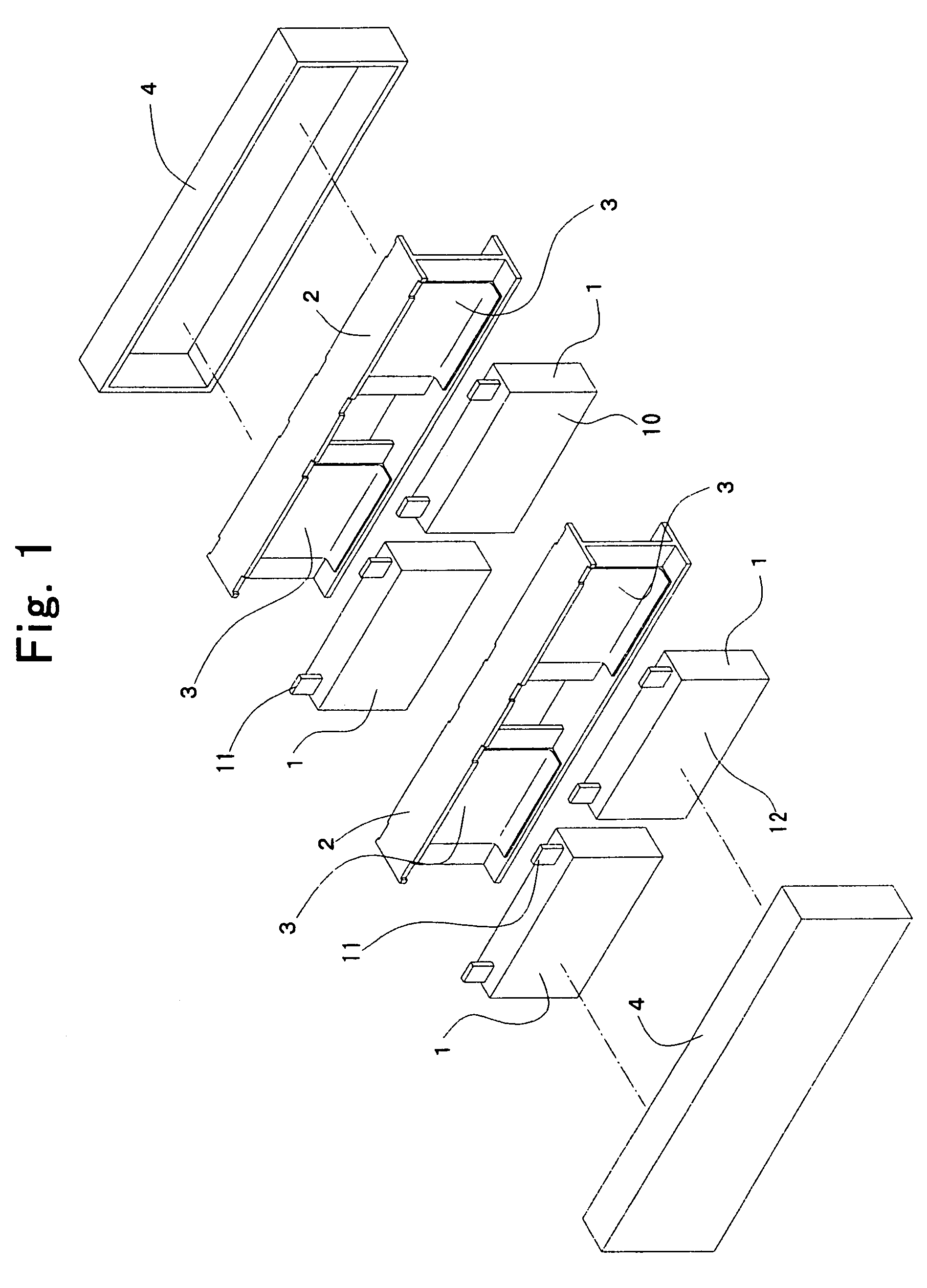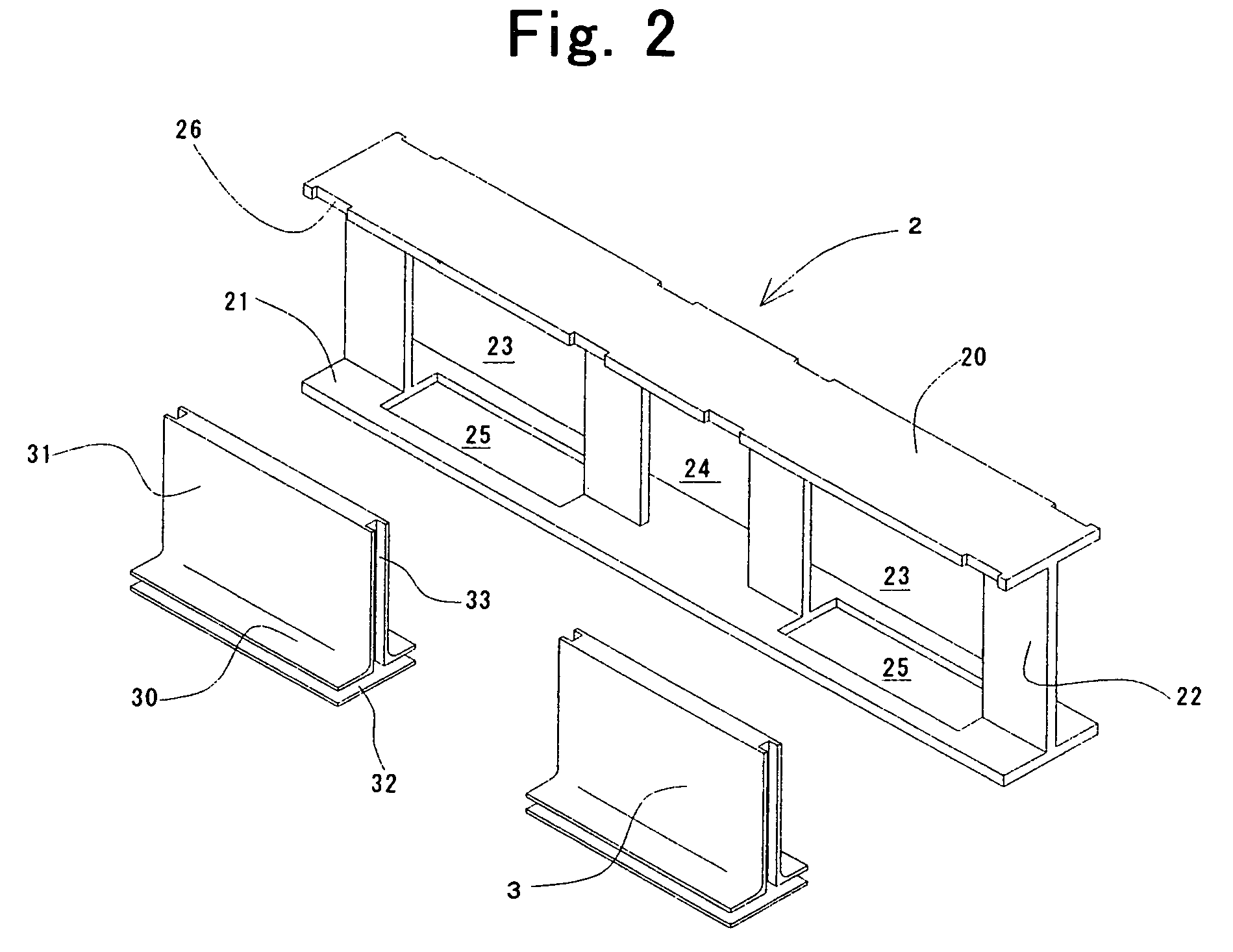Battery assembly
a battery assembly and battery technology, applied in the field of battery assembly, can solve the problems of conventional battery assembly output electricity unstably, performance and longevity have degraded remarkably, and the overall configuration of the battery is compact, so as to reduce the distance between the respective single-battery cells. the effect of longevity and compactness
- Summary
- Abstract
- Description
- Claims
- Application Information
AI Technical Summary
Benefits of technology
Problems solved by technology
Method used
Image
Examples
examples
[0051]Hereinafter, the present battery assembly will be described in detail with reference to specific examples and experimental examples.
example no.1
Example No. 1
[0052]FIG. 1 illustrates a battery assembly according to Example No. 1 of the present invention in an exploded perspective diagram. The present battery assembly according to Example No. 1 comprises a few dozens of single-battery cells 1, spacers 2, and thermally-conductive members 3. The single-battery cells 1 are formed as a rectangular parallelepiped configuration, and have two largest-area side surfaces 12, respectively. The spacers 2 are made from electrically insulatable resin. A half of the single-battery cells 1 and thermally-conductive members 3 are disposed one after another alternately in a row, thereby making left-side battery subassembly in the drawing. The other half of the single-battery cells 1 and thermally-conductive members 3 are likewise disposed one after another alternately in a row, thereby making right-side battery subassembly in the drawing. The resulting two lines of battery subassemblies, the left-side and right-side battery subassemblies are d...
example no.2
Example No. 2
[0064]As illustrated in FIG. 4, a battery assembly according to Example No. 2 of the present invention comprises the thermally-conductive members 3 that are provided with tabs 34, which protrude from the bases 30 downward into the space 53. Except for this feature, the present battery assembly according to Example No. 2 is constructed in the same manner as the present battery assembly according to Example No. 1.
[0065]The present battery assembly according to Example No. 2 comprises the tabs 34 that make the surface areas of the bases 30 of the thermally-conductive members 3, which are exposed to the space 53, greater. Therefore, the present battery assembly according to Example No. 2 materializes a cooling efficiency, which is upgraded more than that the present battery assembly according to Example No. 1 does.
PUM
| Property | Measurement | Unit |
|---|---|---|
| height | aaaaa | aaaaa |
| thermal conductivity | aaaaa | aaaaa |
| thickness | aaaaa | aaaaa |
Abstract
Description
Claims
Application Information
 Login to View More
Login to View More - R&D
- Intellectual Property
- Life Sciences
- Materials
- Tech Scout
- Unparalleled Data Quality
- Higher Quality Content
- 60% Fewer Hallucinations
Browse by: Latest US Patents, China's latest patents, Technical Efficacy Thesaurus, Application Domain, Technology Topic, Popular Technical Reports.
© 2025 PatSnap. All rights reserved.Legal|Privacy policy|Modern Slavery Act Transparency Statement|Sitemap|About US| Contact US: help@patsnap.com



